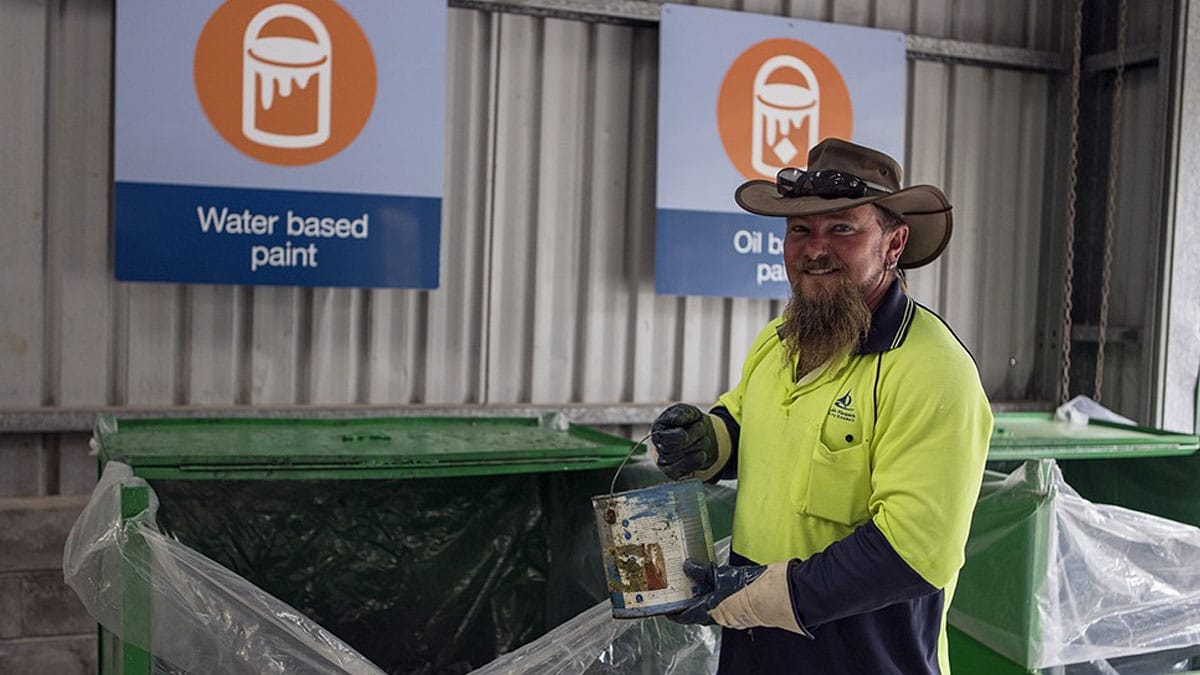What happens to the disposed of material at the recycling centre?

Image credit: https://www.lakemac.com.au/
At your local recycling centre, there are a lot of different machines that help to recycle different types of materials. One machine separates the glass from the plastic and metal. Another machine crushes the cans. Yet another machine melts down the plastic bottles to recycle them. And so on… In this blog post, we describe what happens to the disposed of material, where it goes and how it gets there along with its place in the Reduce, Reuse, Recycle process.
What type of materials are accepted at the recycling centre?
Most recycling centres will accept a range of materials, including paper, card, metal, glass, and plastic. However, it is always best to check with your local centre before delivering any recyclable items. Some centres may have specific requirements, such as separating different types of materials or cleaning items before delivery.
In general, you should avoid putting non-recyclable items in your recycling bin. This includes things like food waste, hazardous materials, and electronic waste. Non-recyclable items can contaminate other recyclables and make them difficult to process. By following these guidelines, you can help to ensure that your recycled materials are put to good use.
How does the recycling process work?
The recycling process begins with sorting. Recyclers sort materials by type, such as glass, metal, paper, and plastic. Once sorted, the materials are cleaned and processed to be made into new products. For example, glass is melted and formed into new glass bottles or jars; metal is melted and formed into new cans or pipes; paper is shredded and made into new paper products; and plastic is melted and formed into new plastic products.
What happens to the disposed of material at the recycling centre?
When you recycle, your used materials are taken to a recycling centre where they are sorted into different types. The most common types of recyclable materials are glass, paper, plastic, and metal. The sorting process involves the following steps:
- The first step of sorting is to get rid of anything that can’t be recycled.
- The vibrating machine separates the cardboard from printer paper, construction paper, etc. which are then sorted by hand and bound together in bales.
- The remaining recyclables then travel on another conveyor where steel cans are removed with magnets.
- Different types of plastic are optically scanned and sorted by type.
- A magnet known as an eddy current is employed to sort aluminium cans.
- The end product is glass, and it falls off the conveyor belt into a large container.
- They are then sent to be handled by specialist factories that know how to recycle them.
Once the materials are sorted, they are cleaned and processed into new products. For example, recycled glass can be used to make new glass bottles or tiles, while recycled paper can be used to make new cardboard boxes or paper towels.
Recycling is an important way to reduce waste and conserve resources. By recycling your used materials, you can help to make new products and save energy.
In addition to helping to preserve the environment, recycling also helps to create new jobs and save energy. According to the EPA, recycling one ton of paper can save enough energy to power the average home for six months.
Contamination
The most pressing issue for a recycling centre is contamination – when people put the wrong items in the recycling bin. If these items are not removed by hand, the likeliness of them being recycled decreases, thus having a negative impact on the economy. Not only does this procedure slow down the process, but if these items go unnoticed, they have the potential of jamming up or damaging the machinery and other equipment.
Common items that people try to recycle but can’t include
- Food waste
- Hazardous materials
- Electronic waste
These items can contaminate other recyclables and make them difficult to process. By following these guidelines, you can help to ensure that your recycled materials are put to good use.


